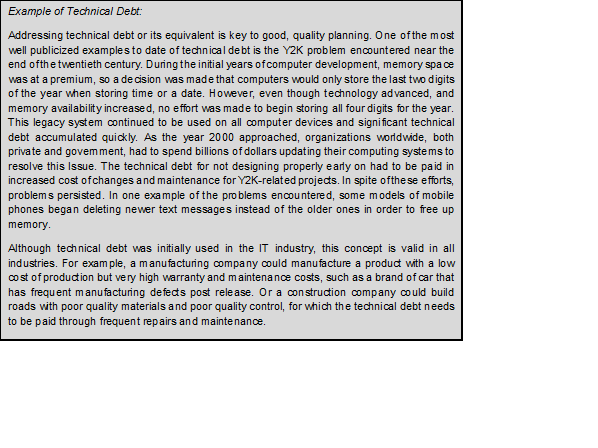Advantages of Scrum’s Approach to Quality Management in a Project
Posted by SCRUMstudy® on November 11, 2022
Categories: Agile Agile Frameworks SBOK® Guide Scrum Scrum Guide
The customer is the most important stakeholder for any project. Therefore, it is important to understand the customer’s needs and requirements. The Voice of the Customer (VOC) can be referred to as the explicit and implicit requirements of the customer, which must be understood prior to the designing of a product or service. Generally, in a Scrum environment, the Product Owner’s focus is on business requirements and objectives, which together represent the Voice of the Customer. The Product Owner can benefit greatly from the guidance available from the Scrum Guidance Body (either through quality documents or standards, or from quality experts). These specialists should work with the Product Owner and the customer to ensure the appropriate level of detail and information in the User Stories, since User Stories are the basis for the success of any Scrum project.
It should be noted that external stakeholders are not directly involved at the Scrum Team level and, instead, interact primarily with the Product Owner. For any Scrum project, the customer may be either of the following:
- Internal (that is, within the same organization)
- External (that is, outside the organization)
Quality management in Scrum enables customers to become aware of any problems in the project early and helps them recognize if a project is going to work for them or not. In Scrum, quality is about customer satisfaction and a working product, not necessarily meeting arbitrary metrics. This distinction becomes very important from the customer’s point of view because they are the ones investing time and money in the project.
Quality management in Scrum is facilitated through a three-step process:
- Quality planning
- Quality control
- Quality assurance
Quality Planning
One of the guiding principles of Scrum is to develop the functionality of the highest priority to the customer first. Less important features are developed in subsequent Sprints or can be left out altogether according to the customer’s requirements. This approach gives the Scrum Team the required time to focus on the quality of essential functionality. A key benefit of quality planning is the reduction of technical debt. Technical debt—also referred to as design debt or code debt—refers to the work that teams prioritize lower, omit, or do not complete as they work toward creating the primary deliverables associated with the project’s product. Technical debt accrues and must be paid in the future.
Some causes of technical debt can include the following:
- Quick-fix and building deliverables that do not comply with standards for quality, security, long-term architecture goals, and so forth
- Inadequate or incomplete testing
- Improper or incomplete documentation
- Lack of coordination among different team members, or different Scrum Teams as teams start working in isolation with less focus on final integration of components required to make a project or program successful
- Poor sharing of business knowledge and process knowledge among the business stakeholders and project teams
- Too much focus on short-term project goals instead of the long-term objectives of the company. This oversight can result in poor-quality Working Deliverables that incur significant maintenance and upgrade costs.
In Scrum projects, any technical debt is not carried over beyond a Sprint, because there should be clearly defined Acceptance and Done Criteria. The functionality must satisfy these criteria to be considered Done. As the Prioritized Product Backlog is groomed and User Stories are prioritized, the team creates Working Deliverables regularly, preventing the accumulation of significant technical debt. The Scrum Guidance Body may also include documentation and definition of processes which help in decreasing technical debt.
To maintain a minimal amount of technical debt, it is important to define the product required from a Sprint and the project along with the Acceptance Criteria, any development methods to be followed, and the key responsibilities of Scrum Team members in regards to quality. Defining Acceptance Criteria is an important part of quality planning, and it allows for effective quality control to be carried out during the project.
Technical debt may a very big challenge with some traditional project management techniques where development, testing, documentation etc. are done sequentially and often-times by different persons, with no one person being responsible for any particular Working Deliverable. As a result, technical debt accrues, leading to significantly higher maintenance, integration, and product release costs in the final stages of a project’s release. Also, the cost of changes is very high in such circumstances as problems surface in later stages of the project. Scrum framework prevents the issues related to technical debt by ensuring that Done deliverables with Acceptance Criteria are defined as part of the Sprint Backlog and key tasks including development, testing, and documentation are done as part of the same Sprint and by the same Scrum Team.
Continuous Integration and Sustainable Pace
Maintaining a sustainable pace is one of the most important tenets of Scrum. Sustainable pace translates to increased employee satisfaction, stability, and increased estimation accuracy, all of which ultimately leads to increased customer satisfaction. To develop a truly high quality product and maintain a healthy work environment, it is important to carry out integration-type activities regularly, rather than delaying the integration work until the end in such circumstances. To provide value at frequent intervals, the team should continuously develop, test, and integrate the functionalities of each Prioritized Product Backlog Item (PBI) in every Sprint with the use of techniques, such as continuous integration and automated product testing. It is also important, from the team’s point of view, to ensure that the effort expended in the current Sprint is similar to the effort spent in the preceding Sprint in order to sustain an even pace throughout the project Sprints. This helps the team avoid phases of intense periods of work, ensuring they are always able to put forth the level of effort required to accomplish the work that needs to be done.


